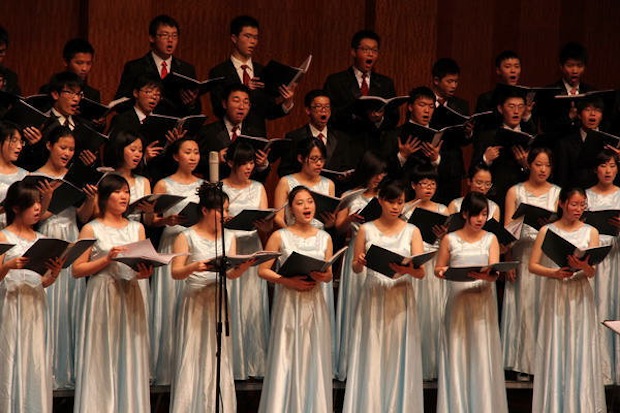We have read about the remarkable opening up of China in recent years: how many people live there and how good they are at business, perhaps finding the prospect of them rushing into our world rather daunting. However, a part of this process has been the sudden curiosity there for western art-forms. Not long ago the idea of a tour of China by a European early music group would have seemed completely fantastical. What space was there in a country which for many years had allowed only eight ‘model plays’ to be publicly staged — all of them about the achievements of the army — for the votive antiphons of Tallis, or the Passions of Bach?
Not everyone in that vast country is ready for such delicacies yet, but a light has begun to shine. The most difficult hurdle for the authorities to overcome was not in music, or even music with sacred words (which were still banned when we visited in 2000), but in the distribution of western films. Lenin said ‘of all the art forms, cinema is the most important to us’, which was taken so literally that film languished as the most conservative link in the cultural chain. Music cannot have been far behind. But symptomatic of a change which has affected every artistic endeavour, since 2004 leading film-makers have been allowed to make films which are critical of social conditions, with the approval of the government.
This thaw has enabled many Chinese people to experience western art for the first time, starting with symphony orchestras and productions of Shakespeare. Many of them will have had little idea what to expect but, being naturally curious, have gathered in large crowds for the most unlikely events.








Comments
Join the debate for just £1 a month
Be part of the conversation with other Spectator readers by getting your first three months for £3.
UNLOCK ACCESS Just £1 a monthAlready a subscriber? Log in